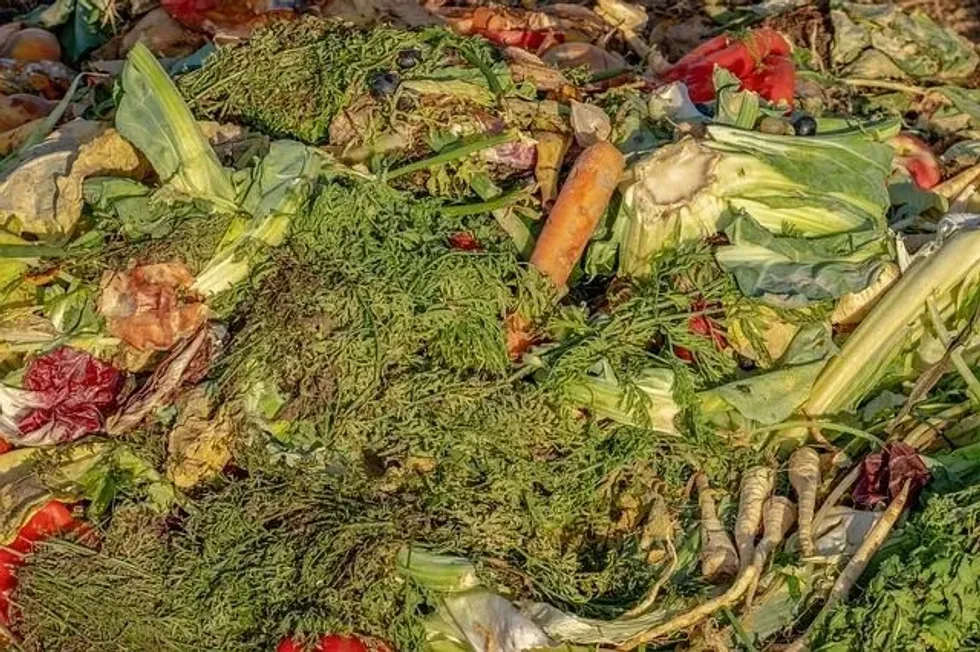Food waste is an important issue in the United States, and it affects more than just the country. The United States discards billions of pounds of food annually.
This article is packed with 31 surprising facts about the mountain of food waste America piles up every year. Wondering why so much food never makes it to a plate? You’ll find out why the food supply ends up in the trash and learn about the big impact this has on the planet.
However, you will not only be learning about food loss and waste. By the time you are done, you will also find out about how individuals, communities, and even big businesses can help cut down on food waste. You can help make a big difference in reducing food waste!
American Food Waste Facts

To understand how big the food waste problem is in the United States, it's super important to check out some surprising numbers about it. In this section, you'll look into the facts and figures that answer the question, 'Just how much food waste does the country produce each year?'
- Americans waste enormous amounts of food every year, between 30-40% of the US food supply goes uneaten. This food loss, affecting stores and households alike, translates to roughly 133 billion lb (60,327,785,210 kg) of wasted food, a staggering cost of $161 billion (based on 2010 figures).
- The environmental effects of food waste are huge! When food gets thrown out and ends up in landfills, it starts to break down and produce methane, a type of gas that is much worse for the planet than the carbon dioxide cars emit.
- The Food and Agriculture Organization says that food waste is responsible for 8% of all the greenhouse gases released into the air around the world. That’s a lot of gas from just not eating leftovers.
- According to the United Nations, all the food that gets produced but not eaten could feed a whopping 2 billion people globally.
- Food waste occurs at every step of food production, from the time it’s grown by farmers to when it’s packed, shipped, made into products, sold in stores, and brought into homes. About 43% of all the food made in America, which adds up to 42 billion lb (19,050,879,530 kg), is thrown away right at home.
American Household Food Waste Facts
Food waste doesn’t just happen in restaurants, grocery stores, or farms; it’s also a big deal in homes. Sometimes people buy too much, don’t plan meals well, or get confused by what food labels mean. In this section, you'll take a closer look at facts about household food waste problem in the United States.
- Every year, the average family in America throws away food that could cost more than $900! Imagine all the toys, games, or even trips to the amusement park that could buy.
- Families in South Carolina likely waste about $1,305 worth of food every year. Meanwhile, over in West Virginia, families waste around $405 on food annually. That's still a lot of pizza slices that could have been enjoyed.
- During holiday times, food waste in American homes jumps by 25%! Why? Because there are lots of extra goodies that don’t get sold in stores and heaps of leftovers from big meals that nobody ends up eating.
- Can you believe that about 35% of all the turkey meat eaten during Thanksgiving in the US gets thrown away? That's around 204 million lb (92532843.5 kg) of turkey, enough to fill a lot of sandwiches.
- The foods that get tossed out the most in American homes are dairy products like milk and cheese. Then comes meat and fish, followed by bread and veggies. It’s like a whole grocery list just ending up in the trash.
- Did you know that almost a quarter of all municipal solid waste collected across the US is wasted food? That’s right, 24.1% of the garbage is food that could have been eaten.
- Each year, an average American throws out almost 220 lb (100 kg) of food.
Facts On How To Reduce Household Food Waste
 Shutterstock
ShutterstockNow that you know some surprising things about food waste, it's time to focus on how you can help in preventing food waste. Stopping food waste is a big part of solving the bigger problem, and there are lots of easy and smart ways that you and your family can help make things better.
- Before you head to the store, look in your fridge, freezer, and pantry first to avoid buying more food than you need.
- Make a weekly list of what needs to be eaten and plan meals around that. Write down how much of each item you need for your meals to prevent buying excess food.
- Buying from bulk bins can save money and reduce food waste if you only buy what you need and store it right.
- Buying imperfect produce or upcycled products not only saves you money but also helps use food that might otherwise be wasted because it looks a bit odd but is just as good to eat.
- Put veggies like lettuce and carrots in the 'rainforest' drawer of your fridge (that's the humid one), and fruits and mushrooms in the 'desert' drawer (the less humid one).
- Keep fruits that make others ripen, like bananas and apples, away from other foods so they don't cause a ripening race.
- Hold off on washing berries and grapes until you’re ready to eat them; it keeps the molds away.
- Store things like potatoes and onions in a cool, shadowy spot like a treasure chest. They love the dark.
- Make sure your fridge is as cold as a polar bear’s nose about 40 F (4 C).
- Keep grains in tight-sealed jars and label them with what's inside and the date, like a food diary.
- Use your freezer to pause foods like bread, cut fruits, and leftovers from getting bad. Just like hitting the freeze button on a video game. Don’t forget to write down what’s inside and when you froze it.
- Use the 'jungle' drawer (high humidity) for veggies like lettuce and the 'desert' drawer (low humidity) for fruits and mushrooms.
EPA Facts On Reducing American Food Waste

Did you know there's a superhero team called the EPA, which stands for the Environmental Protection Agency? They're not your usual superheroes, but they have a super important mission: to protect people and the planet. They give tips on how to reduce food waste and come up with plans to keep food out of landfills.
- Back in 2015, two groups, the USDA (United States Department of Agriculture) and the US Environmental Protection Agency, made a huge promise. They decided to work together to cut down America's food waste by half before the year 2030 rolls around. That's a big goal to help the planet.
- The EPA has some plans based on numbers from the year 2010 when each person in the US threw away about 218.9 lb (99.2 kg) of food. By the year 2030, they want to cut this number in half, so that each person only throws away 109.4 lb (49.6 kg) of food.
- The EPA has updated its guide on what to do with uneaten food, now known as the Wasted Food Scale. This new version is even better because it includes the latest tech improvements and new ways of doing things, making it easier for people to handle food waste smartly.
- The EPA did a study on how wasting food affects the environment, from where it's grown to homes. They found out that throwing away food does have a big impact on nature in the US.
- Since 2017, the EPA has improved how they measure food waste, which means they now have better and more detailed information about how much food gets thrown away and how it's handled. This helps everyone understand the issue more clearly.
FAQs
What's the difference between food loss and food waste?
Food loss happens early on before food even reaches you. Imagine a farmer's crops that never make it to your plate. Why? Maybe bad weather ruined the crops, or there weren’t enough good tools to harvest them properly.
Sometimes, the food might get lost on its way to the store because of bumpy roads or not enough cool trucks to keep it fresh. This happens a lot in places where they don’t have the latest farming gadgets or big enough storage sheds.
Now, food waste happens closer to home, like in your kitchens, restaurants, or the local grocery store. Food waste is when perfectly good food ends up in the trash because maybe you bought too much, or didn’t understand the dates on the package.
It's more common in places where there's plenty of food and it's not too pricey, leading to buying more than needed or tossing out what looks less than perfect.
Do food loss and waste have similar negative effects?
Yes, food loss and waste both create some big problems that can mess up the environment, cost a lot of money, and make things tough for people everywhere. For example, making food that no one eats wastes lots of important things like water, land, and energy.
These are super precious because there isn’t an endless amount of them, especially as more people live on Earth.
Also, not eating all the food made costs billions of dollars every year. That’s money that could have paid for farming tools, workers, or even new playgrounds and schools. When food isn’t eaten, all that money and hard work go to waste.
Lastly, when food gets lost or thrown away, it means there’s less food available for everyone. This can be tough for people who don’t have enough to eat. Saving food could help feed families that are hungry and help everyone have enough.
Can reducing food waste help the environment?
Absolutely! Cutting down on food waste does wonders! Not only do you save important resources and money, but you also reduce the greenhouse gas emissions that come from food rotting in landfills. By doing this, you're helping fight against climate change and making the planet a cooler place to live.
Do all food wastes end up in landfills?
While a lot of it does go there, many other cool things can be done with uneaten food. For example, some of it can be used to feed animals or turned into energy or new materials through special processes.
Other bits might be turned into compost to help plants grow or even donated to people who need it.
Learning about food waste sure gives you a lot to think about! It's a big problem in America, and it can hurt the planet and people. But guess what? You can help fix it! You can make a big difference by learning more about the issue, thinking carefully when shopping, and working together on cool new ways to save food.
Related Articles Around the Web





 Shutterstock
Shutterstock





